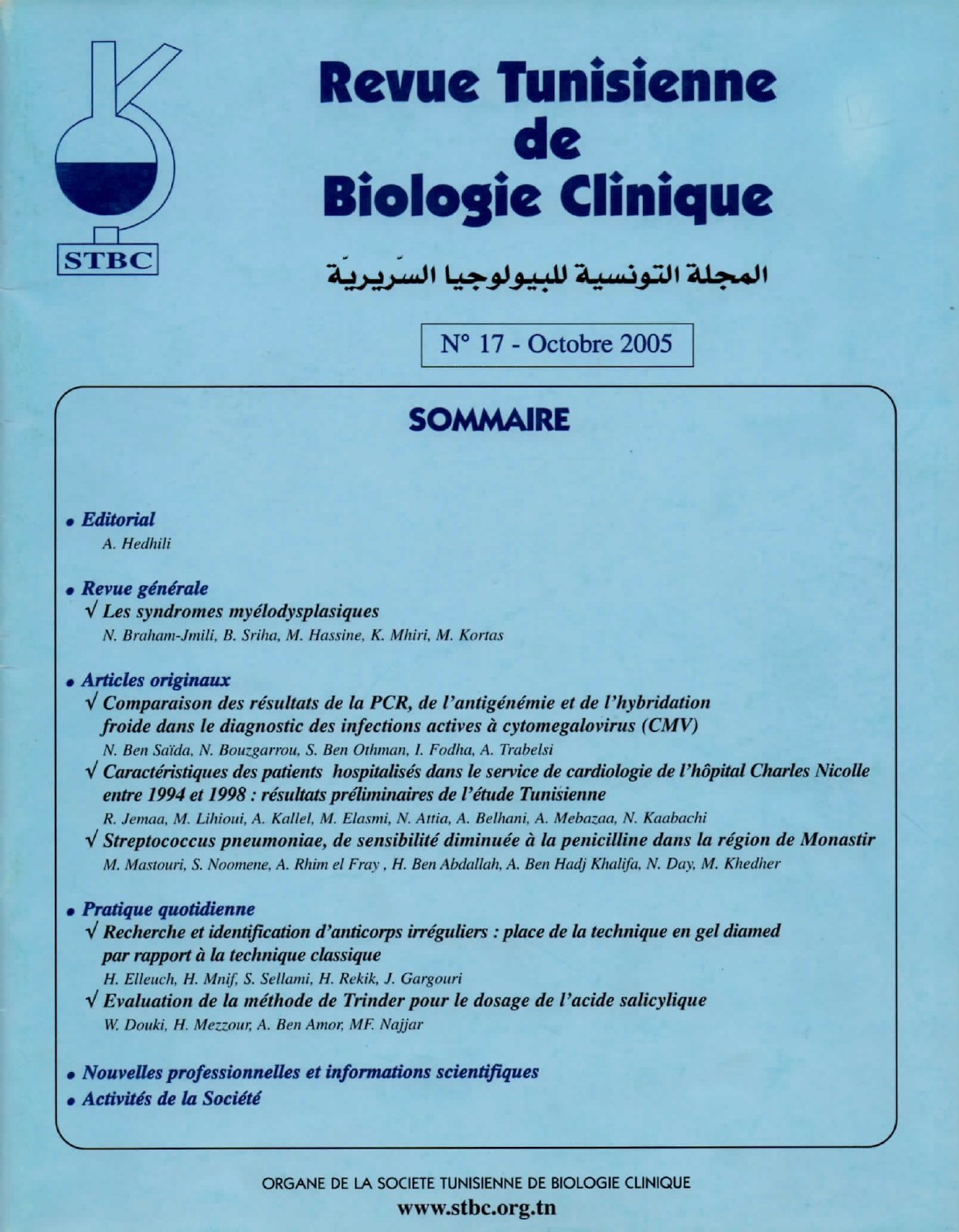Abstract
Myelodysplatic syndromes (MDS) are clonal disorders of hematopoïetic precursors characterized by a defective myelopoïesis responsible for peripheral cytopenias. They are generally observed after 60 years of age with peak frequency in 70-80 years age group. These syndromes represent 3 to 5% of all bone narrow disorders. MDS are mainly primary, but sometimes, etiologies were found : environment or genetic factors. Diagnosis is occasionally difficult, peripheral blood and bone narrow aspirates date are sufficient in most cases both for establishing the diagnosis and for classifying the MSD one of the five categories proposed by the FAB cooperative group. Of the FAB classification, the age, the degree of peripheral cytopenias, the bone narrows blast proportion and caryotypic abnormalities mainly depends prognosis and therapeutic management, which is limited in most cases to symptomatic treatment principally with transfusional support.

This work is licensed under a Creative Commons Attribution 4.0 International License.
Copyright (c) 2005 Revue Tunisienne de BIOLOGIE CLINIQUE

